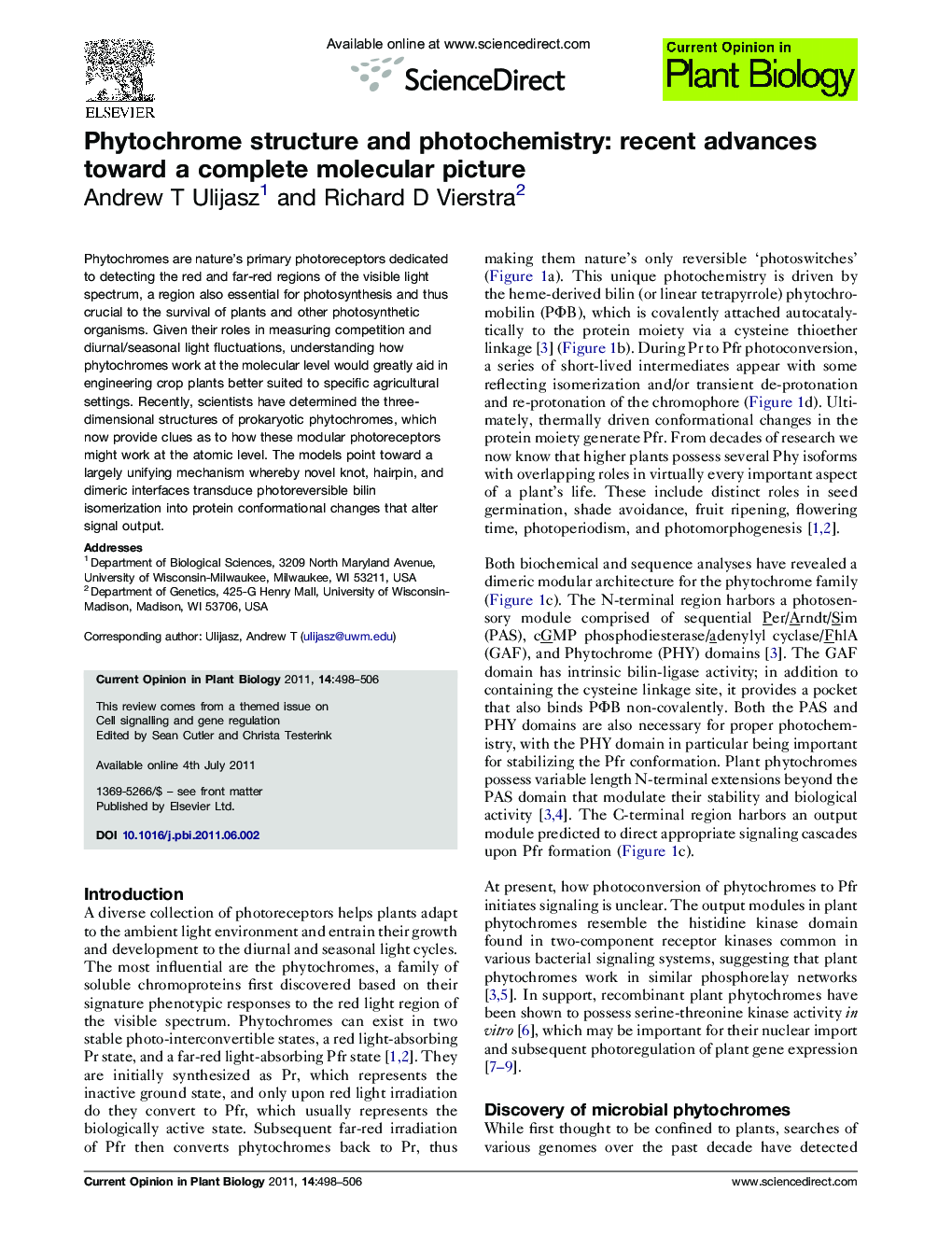| Article ID | Journal | Published Year | Pages | File Type |
|---|---|---|---|---|
| 2046830 | Current Opinion in Plant Biology | 2011 | 9 Pages |
Phytochromes are nature's primary photoreceptors dedicated to detecting the red and far-red regions of the visible light spectrum, a region also essential for photosynthesis and thus crucial to the survival of plants and other photosynthetic organisms. Given their roles in measuring competition and diurnal/seasonal light fluctuations, understanding how phytochromes work at the molecular level would greatly aid in engineering crop plants better suited to specific agricultural settings. Recently, scientists have determined the three-dimensional structures of prokaryotic phytochromes, which now provide clues as to how these modular photoreceptors might work at the atomic level. The models point toward a largely unifying mechanism whereby novel knot, hairpin, and dimeric interfaces transduce photoreversible bilin isomerization into protein conformational changes that alter signal output.
► Structures of the photosensory module for several microbial phytochromes have been solved. ► A cryo-EM structure of a complete phytochrome is now available. ► The sum of these structural studies point to eventual light-driven changes in dimerization. ► Questions still remain about the initial events responsible for Pr to Pfr phototransformation. ► The structures obtained with microbial versions are likely pertinent to higher plant phytochromes.
